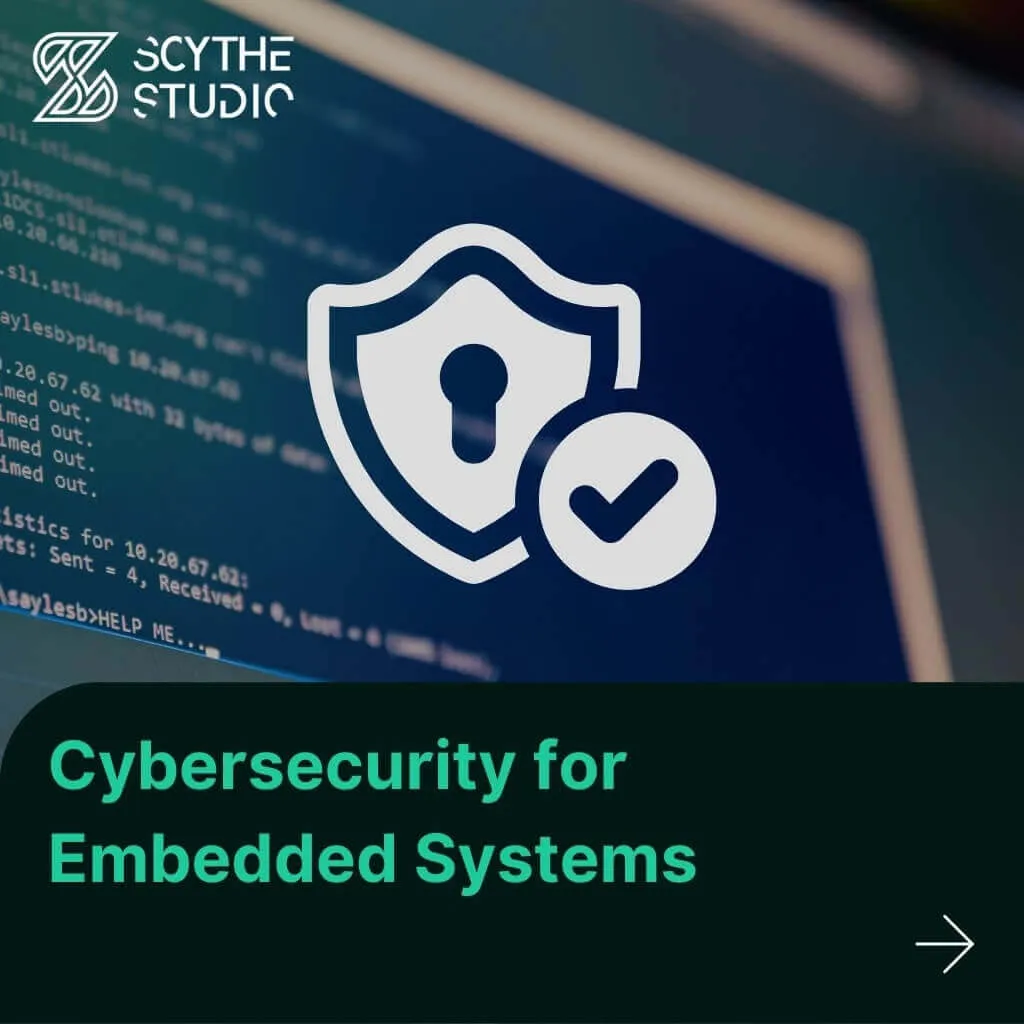
Cybersecurity for Embedded Systems
From medical devices and smart vehicles to industrial controllers and consumer electronics, embedded systems are everywhere—and increasingly connected. But with […]
Join us at Qt C++ Warsaw Meetup - 21.08.2025
Sign up for free!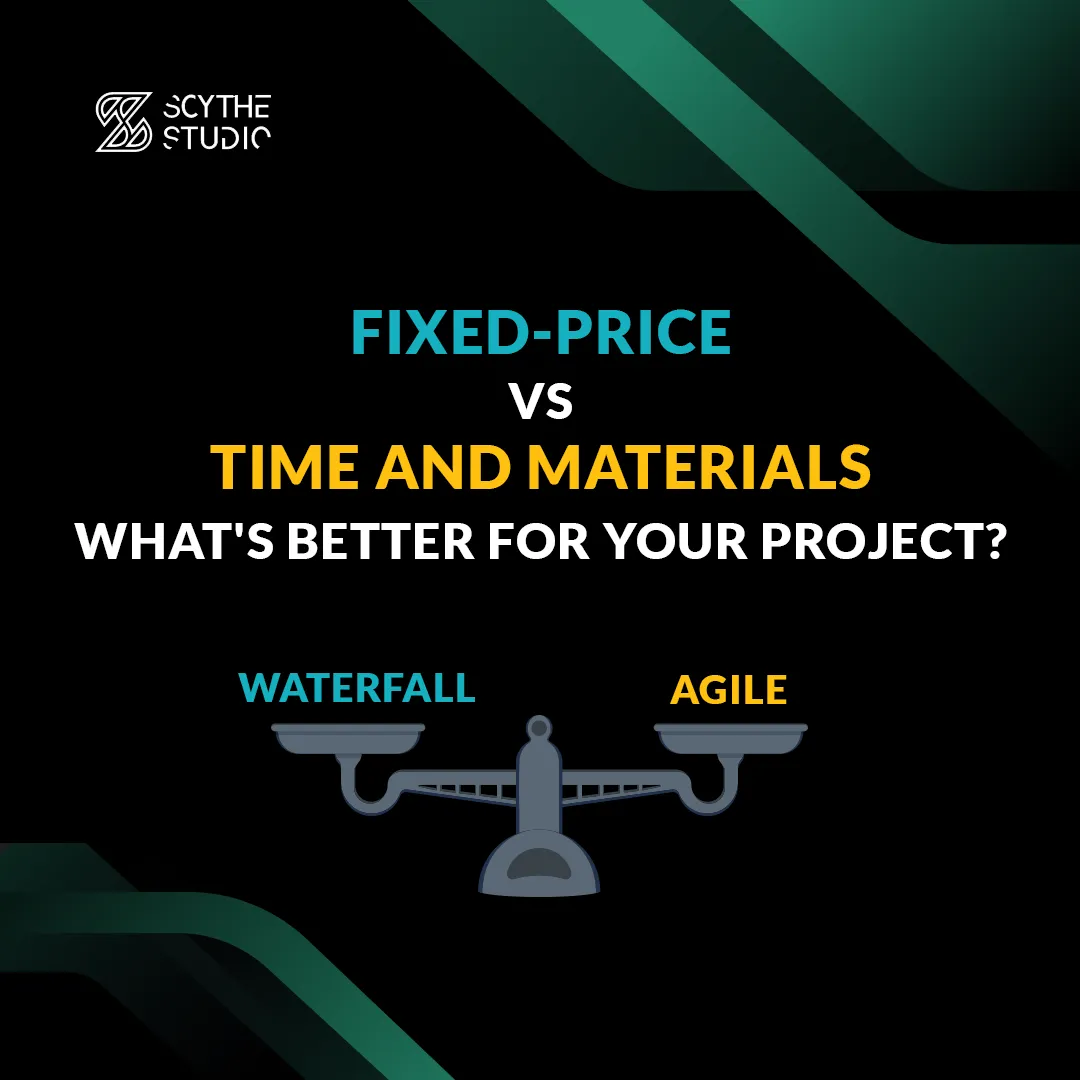
Outsourcing has become a widely popular model for running business in the modern world and there is no surprise. Companies specializing in one field do not need to allocate finances, employ people and plan their job in a field they have no experience and knowledge at ― they may take advantage of outsourcing companies. These can be services of any kind ― IT, design, finances and other. However, when it comes to selecting a model for the contract and project’s realization, there might be an issue what to choose for your project. Mainly, there are two different approaches ― Fixed-price Model and Time and Materials Model. In this article we will discuss both models and identify their pros and cons in order to select the approach which suits your project best.
When it comes to considering the contract models, most probably the very first approach coming to people’s mind is paying for a specific done job. Both sides negotiate a price, a deadline and other details beforehand assuming there will be no significant changes in the requirements of the project. That’s what the Fixed-Price model really is.
The vendor sets the price for the project. That can be a two-edged sword for the outsourcing company, though. On one hand, the company may predict the needs for the project based on previous experience with similar tasks. On the other hand, each single project is unique and sometimes it might be hard or even impossible to foresee the required resources.
As you may see, the planning is a crucial stage in utilizing Fixed-Price model because the result will highly depend on a developed plan. The customer and the vendor have to be clear at specifying milestones, deadlines and deliverables. Otherwise, it may happen that there is not enough time, money or people for newly suggested changes.
When Fixed-Price model is utilized for software development, the Waterfall management methodology is usually utilized.
In a nutshell, Waterfall is a sequential, linear process of project management consisting of discrete stages. No stage starts before the previous one has been completed and there is no such option as getting back to the previous phase (can be used instead of stage). The only way to repeat the stage is to start over at phase one.
In Waterfall methodology, planning is an essential step (see connection to Fixed-Price model?). The project’s requirements must be clearly defined and documented so that all the participants understand the requirements and their role in the project. The members of the project will refer to the documentation throughout the development process, that is why it is important for documentation to be comprehensive and understandable.
The stages may differ from project to project, but usually the following stages are included:
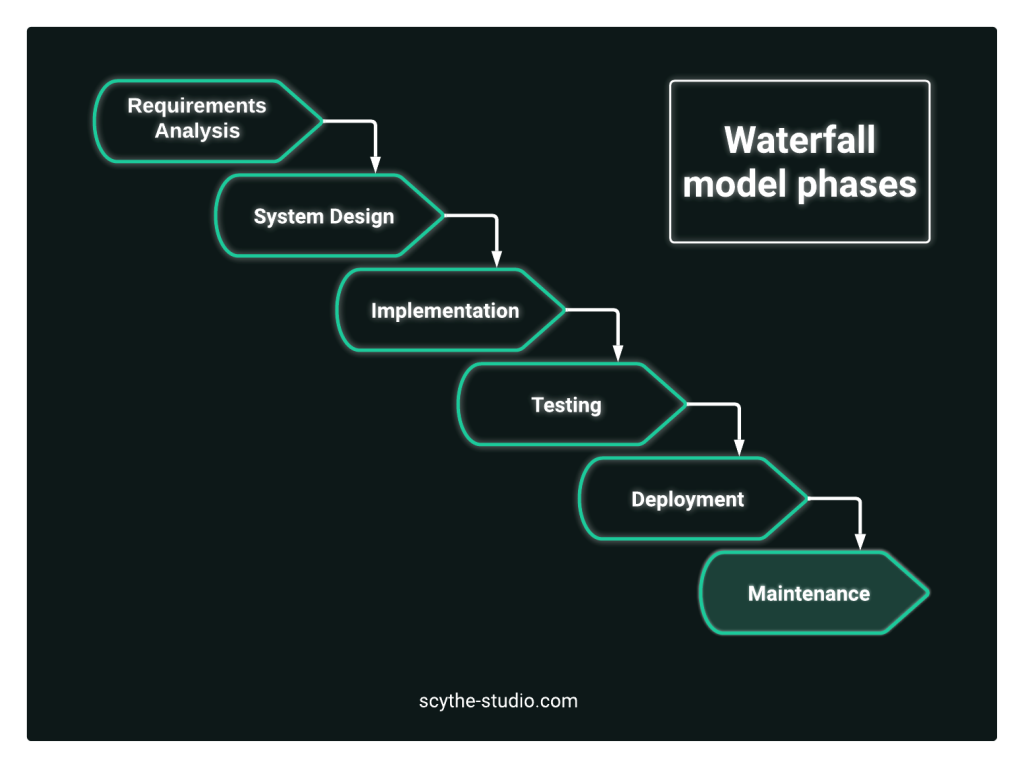
Let’s sum up the Waterfall with its advantages and disadvantages:
Advantages:
Disadvantages:
In contrast to the Fixed-Price model Time and Materials does not pay that much attention to planning since changes and renegotiating of the deal are assumed from the start. Both client and outsourcing company do not know how much exactly the entire work costs beforehand, that is why the outsourcing company needs to keep track of time spent on work.
Since this approach does not have a long preparation stage, the team may start the work almost immediately. Usually, members of the team work on small parts constituting epics. Not only does it help assessing the time needed for the specific feature or functionality easier, but it also maintains the motivation of the participants because of more frequent “commits” or “finished steps”.
This model is perfect for customers who are not yet sure about the final version and all the requirements of the project. A big and extensive project having many submodules is a great example of products Time and Materials approach will work great.
Having a dynamic basis, Agile suits best for such models as Time&Materials because it provides an opportunity to make most of the evaluations and assessments on the fly because it emphasizes communication both among the team and the client.
Agile is another management methodology aiming to improve the efficiency of delivering the product to the customer. This methodology pays a lot of attention to the dynamic surrounding and scope of the project, that is why it is important for teams using this approach, to build a solid ground for communication. The team members have to be able to address the changes, motivate others and have good discipline.
This approach is usually encapsulated in The Agile Manifesto:
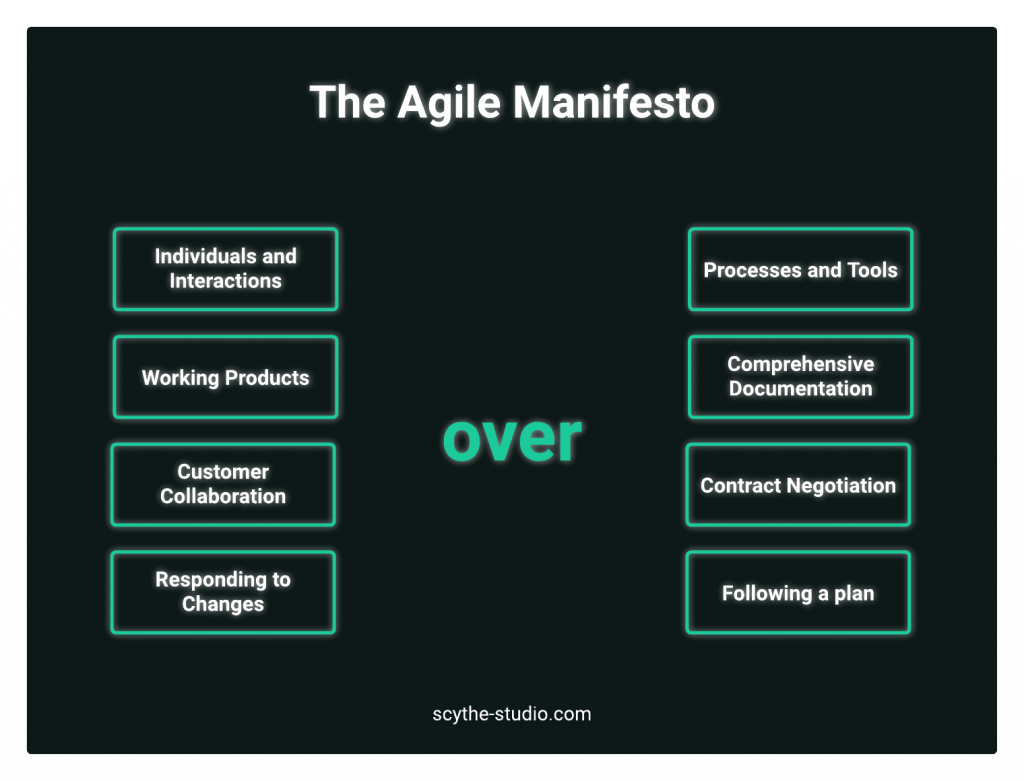
Strictly speaking, there are numerous Agile approaches that can be utilized. Each one of them tries to take the most advantage of the field the company operates in, its environment and possibilities etc. The most popular are:
Let’s summarize the advantages and disadvantages of Agile:
Advantages:
Disadvantages:
Getting familiar with both approaches and their most-frequently used methodologies, we may say what we should look at selecting the model for the project.
You should consider the Fixed-Price model in case you are provided with detailed specifications for the project or/and you are good at planning. In case of project having determined deadlines, you would also make a lot of use of the Fixed-Price model. If the project is not long-term or it is short on features, these are the signs to select this model too.
There are also signs that the Time and Materials model will suit your project. First, if your project is high-probable to have dynamic requirements or/and anticipate changes this model is likely to be your choice. Second, if the project is going to be long-term and there is no final expected result, but general concept, Time and Materials would serve you well. This is also a good choice for projects having an unclear scope and environment.
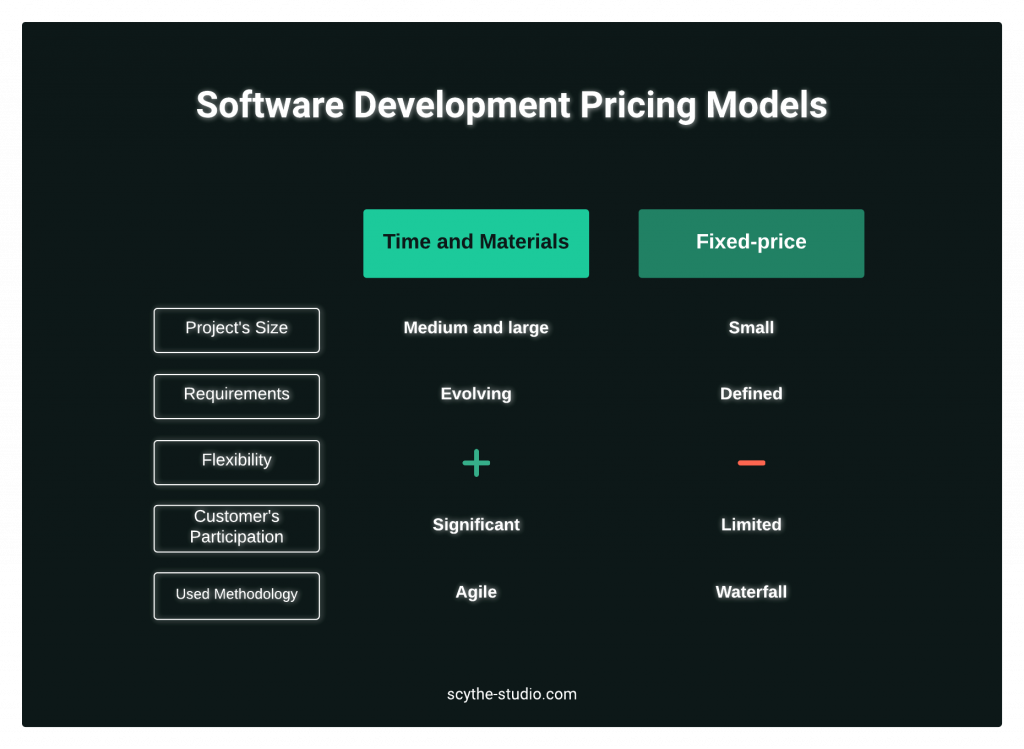
In Scythe Studio we are ready to utilize both approaches as we try to adapt to the client needs as much as possible. In order to provide the best possible services and bring the customer satisfaction we may consider any possible management approach, even those we haven’t tried before in order to get new experience and knowledge.
You can learn more about our approaches and methods to working process here.
Taking everything into consideration, it should be clear what these two approaches and their methodologies are. Now you see the difference between them and what to choose for your project to maximize your efficiency and deliver the customer the high-product.
Let's face it? It is a challenge to get top Qt QML developers on board. Help yourself and start the collaboration with Scythe Studio - real experts in Qt C++ framework.
Discover our capabilities
From medical devices and smart vehicles to industrial controllers and consumer electronics, embedded systems are everywhere—and increasingly connected. But with […]

Hey, welcome back to another blog post. Today we’re going to talk about the new Qt WebAssembly. This post will […]
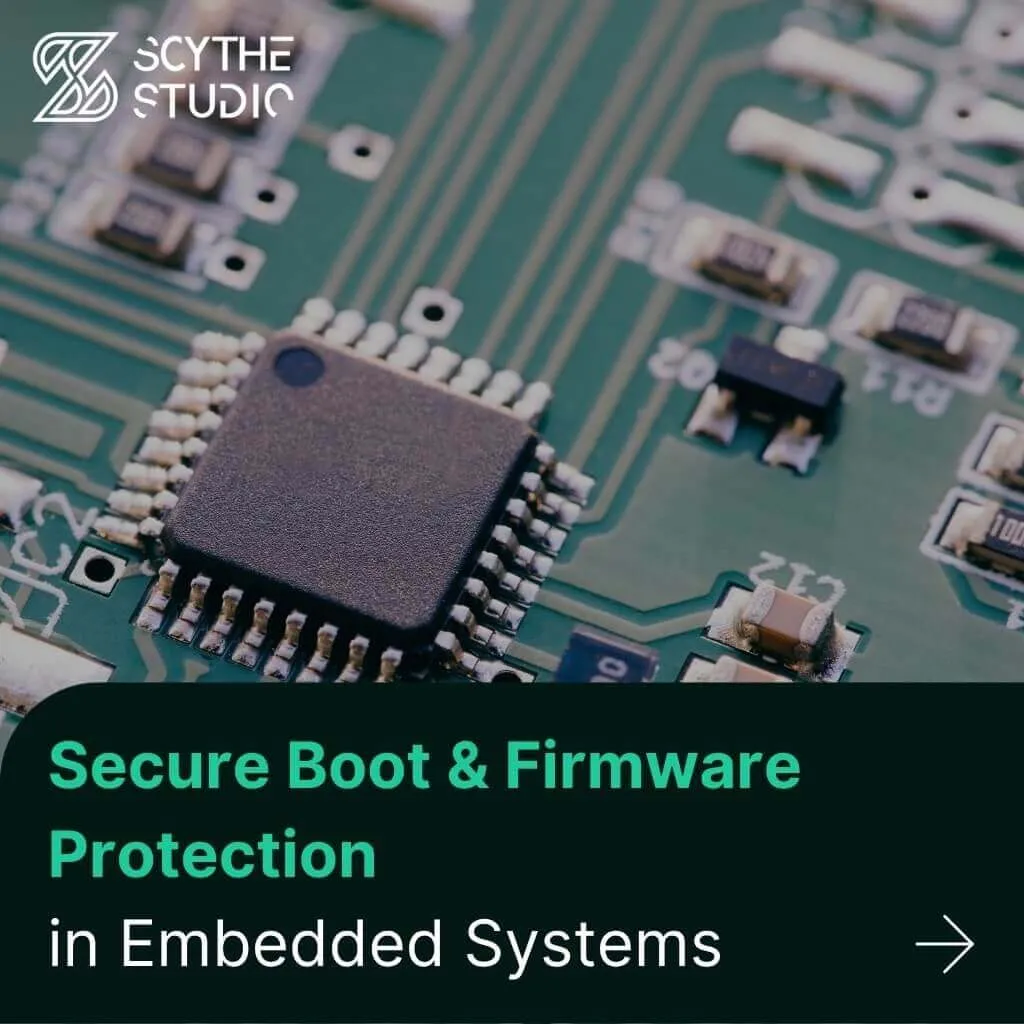
Users of embedded devices – from industrial controllers to consumer electronics – are often unaware of hidden vulnerabilities that threaten […]